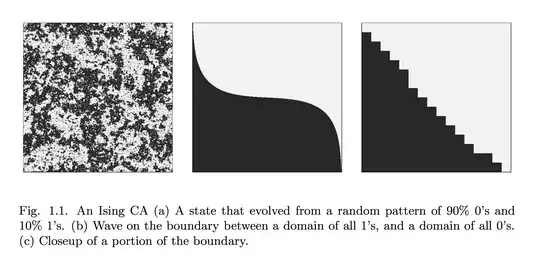This question may turn out to be trivial or nonsensical as I do not have more than undergraduate understanding of both the Ising model and computational physics simulations.
I just wanted to post this to see if this "shower thought" that I just had has already been explored and studied.
The question is pretty straightforward.
The lattice setup of Conway's Game of life is identical to the one of the Ising model, the difference being that the former evolves through Conway's "rule" while the latter evolves through classical statistical mechanics.
The ising model though is subject to a thermodinamical constraint concerning temperature which can cause fluctuations in the lattice that could not be foreseeen with the use of the Conway's rule.
I was thinking that maybe a location and temperrature-dependent rule for the lattice might be used to recreate the behaviour of an Ising lattice.
Has this approach ever been explored? If yes could you link some reference because i'd be extremely interested to read some of those. If not is there any specifical reason why not?
EDIT: I understand now both from the comments and from the answers that my question wasn't probably well-posed, so I'll make an attempt to be clearer. Is there a way to model Conway's rule in a location and temperature dependent fashion such that the lattice exhibits the same macroscopical behaviour as in an Ising Model (e.g. low temperature ferromagnetism)? If the answer to the latter question is "yes" then can this teach us anything about the physical model?
